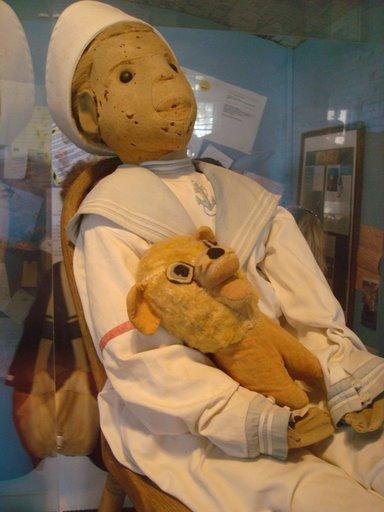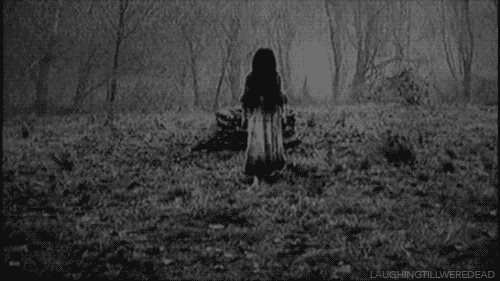Dolls fascinate me, they look so innocent, so harmless. Yet people are terrified of them. So many stories exist of cursed dolls that have been possessed by demons and vengeful spirits. Some that simply like to move around, blink, mess with cameras and furniture. Others that bring misfortune, and sometimes death to those that possess them.
Robert the doll, a little boy in a sailor suit who carries with him a stuffed puppy now sits forever behind glass on a wooden chair. Visitors come to see him in order to request photos or videos. Those that do not give him the consideration of such a request are said to be cursed until till they apologise to him for their rudeness. Now well over 100 years old, Robert the Doll was named after his owner Robert Eugene Otto who was gifted the doll when just a small boy. Stories do vary as to who gave Robert to Otto, some say it was his grandmother, others grandfather, some even say it was a disgruntled housekeeper who was fired for practicing black magic giving the cursed doll to Otto as a final act of revenge. Whatever his origins, Robert thrills those who come to peek at him saying that he gives off an eerie feeling. People claim that his expression changes and his black eyes bore through them. Those that work at the museum where he resides say that they can hear him moving around in his box at night and that he is sometimes found in different positions.

Another well-known doll is Annabelle. This darling red headed raggedy Anne doll doesn’t look even remotely scary. Her stitched smile and eyes give her a very childlike innocent appearance and it is very hard to believe she possesses such evil. Gifted to a young nursing graduate Donna, Annabelle started her hauntings innocuously. Moving around the apartment from bedroom to loungeroom, sometimes being seen standing upright on her feet, or sitting cross legged and staring off into space when she had originally been lying on the bed. But things began to get far more sinister, notes saying “help me” were found near her and her hands and back were stained with blood spots. A séance was performed by a medium who said that a young girl of 7 years old had possessed the doll hoping to find a new family to love her. It was not till another housemate started being attacked by Annabelle that it was clear this story was far from correct. It took an investigation by Ed and Lorraine Warren after Donna contacted Father Hegan desperate for help to find out that Anabelle was not a little girl, but a demon. Fearing that this demon intended to take over a human host the doll was taken away by the Warrens and is now amongst their wild collection of haunted objects at their personal museum. And there she stays. People who wish to see her are warned not to taunt her or touch her in case she tries to possess them, or worse, she tries to have them killed.

Dolls are certainly a favourite for the horror genre. Both Robert and Annabelle having inspired their own movies. But even without the “true story” aspect, some fictional dolls have inspired true fear in movie goers. One such character no one can go past is Chucky. This little guy ends up possessed by a serial killer on the run from police. From there he is bought by a mother for her sons’ birthday and from there he has become an iconic little demon doll who has slashed his way into our hearts. Smart mouthed, truly twisted, and somehow able to continuously come “back from the dead” Chucky has been the main antagonist in 7 different movies. Including one where he manages to father a child.
Dolls are not always depicted as evil. In the Japanese manga series, and subsequent Tv show, Rozen Maiden, Shinku, a bisque doll made by the artist Rozen, and her fellow dolly friends all battle each other to become the perfect doll. Known as the Alice game, each doll fights the others in order to collect their Rosa Mystica, once all 7 have been collected they will then earn a reunion with their creator and the title of Alice. This story of characters follows the dolls journey to becoming the perfect doll while building strong bonds with each other as well as their hosts Jun Sakurada, a boy who has shut himself off from the world due to bullies, and his sister Nori Sakurada who tries very hard to encourage him back into the world. The story is a beautiful example of how friendships can help heal and rebuild someone. That family comes in all forms and with these bonds comes new strength.

So it is, that while dolls have certainly cemented their place in the world of horror and slasher movies, they can certainly find their way into other genres where their intentions are far less sinister in nature. Either way, I have certainly got a soft spot for these odd beings and intend to build my own little group of creepy “friends”.




